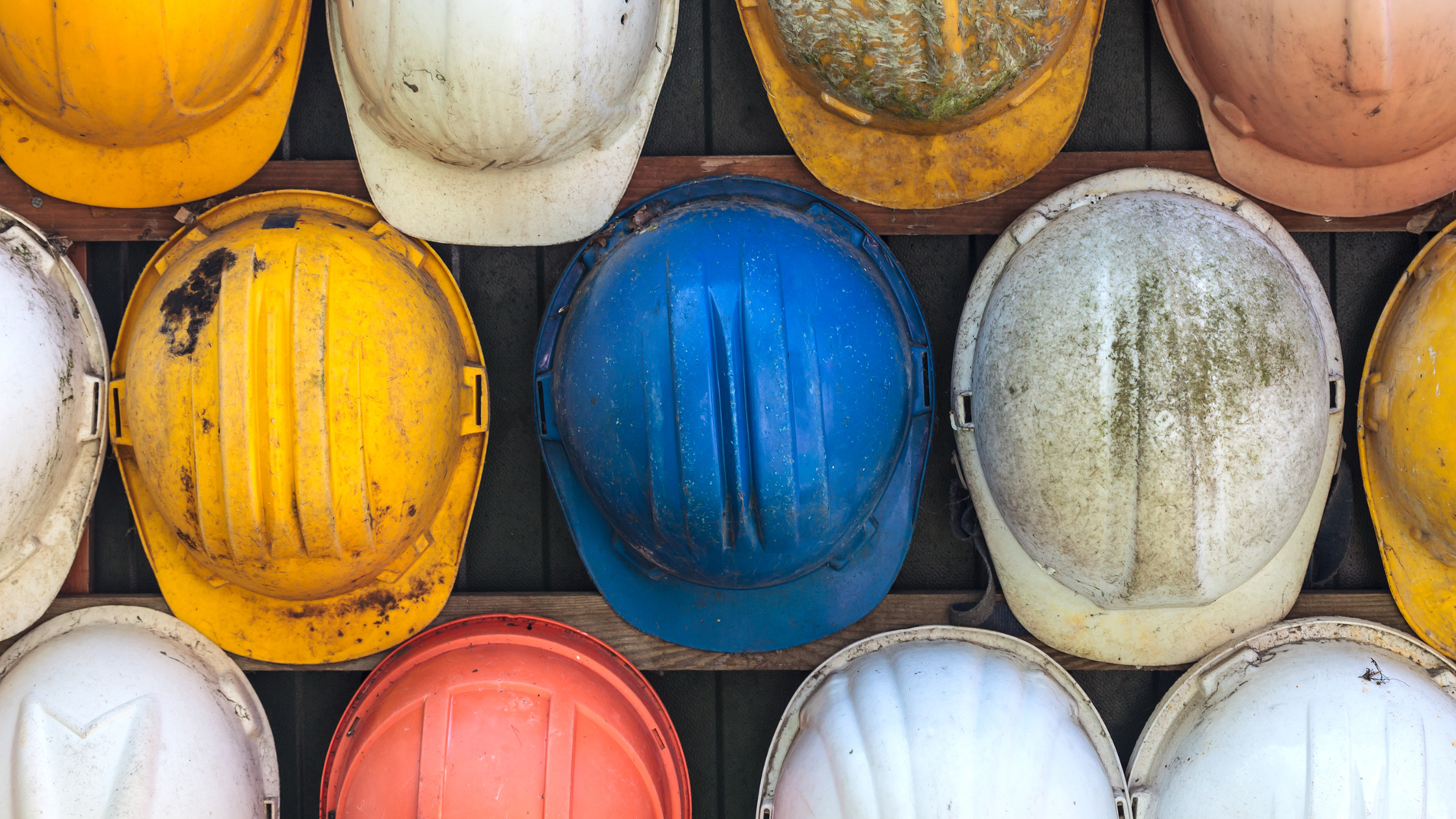Hard hats are an important piece of personal protective equipment (PPE)—but they don’t last forever. If your hard hat is more than about five years old, it probably needs to be replaced.
Check your hard hat expiration date
Hard hat manufacturers print a manufacture date on the inside of the hard hat brim. If you must wear a hard hat on the job, you should check the manufacture date and its usable lifespan.
With hard hats, the expiration date is usually two years to five years after the date it was manufactured.
- The hat’s expiration date varies widely, depending upon the manufacturer and the hard hat model
- Assuming your hard hat is good to use for up to five years because some hard hats are good that long is a big mistake
Even if a hat appears to be unflawed and undamaged, you cannot eyeball a hard hat and know whether or not it’s still safe to use for protection (providing it has no noticeable flaws and is within its usable period, that is) while disregarding its expiration date.
Remember: This date isn’t negotiable—you cannot put off getting a new hard hat if it’s out of date simply because you only wear the hat occasionally and think it should last longer. The hard hat materials slowly break down and lose their effectiveness over time, so the expiration date is firm.
Don’t use an expired hard hat
Never use a hard hat that’s past its expiration date—this provides a false sense of security.
The federal Occupational Safety and Health Administration requires that all hard hats be replaced no more than five years after their manufacture date.
Don’t use a damaged hard hat
Regularly inspecting your hard hat for damage is also critical. Construction sites are hazardous, and your hat may have endured damage during your workweek.
Ideally, you should inspect your hard hat daily—but certainly, no less frequently than once per week.
- Check the hard hat for dents, fractures, and other types of damage, including scuff marks
- Inspect the suspension system—the web of plastic, leather, or fiber cloth that acts as the interior of the hat “shell” and sits on your head—for damage or stretching
In cases where your hard hat seems iffy due to damage or a lifespan beyond the manufacturer’s recommendations, replace it with a new one.
Clean your hard hat regularly
Remove dirt and other corrosive agents from the exterior surface by washing with soap and water.
Be sure to store your hard hat in a cool, dry place to ensure that it remains as durable and protective as it was intended to be; heat can damage a hard hat’s material makeup and, thus, decrease its protective abilities.
Hard hat maintenance tips
Here’s a summary of some of our best tips to keep your hard hat in optimal condition:
- Inspect your hard hat daily: Check for signs of damage to the interior and exterior. A hard hat shell that is cracked or damaged is unsafe to use. Replace it immediately.
- Check the hard hat’s suspension: If the suspension is loose, misshapen, or ill-fitting, the hat should be replaced. Even if the suspension appears in good shape, it may need to be replaced if it’s past the expiration date.
- Consider using disposable hard hat liners: Under some weather conditions, using disposable hard hat liners could be a lifesaver. Liners absorb sweat from your head and prevent the hat from becoming loose and ill-fitting.
- Try no sweat liners: No Sweat hard hat liners soak up sweat and work with bump caps, too. These disposable inserts are easy to install, stick to the hard hat, and help prevent the need to constantly wipe sweat from your face. Hard hat liners can be used for one work period, and some even up to two weeks.
- Check the standards for your specific hard hat: Standards vary by hard hat. Always check the standards and do not use the hard hat in a way that will exceed the recommended standards of use. It will compromise its integrity and decrease the protective abilities of the hard hat.



3 comments